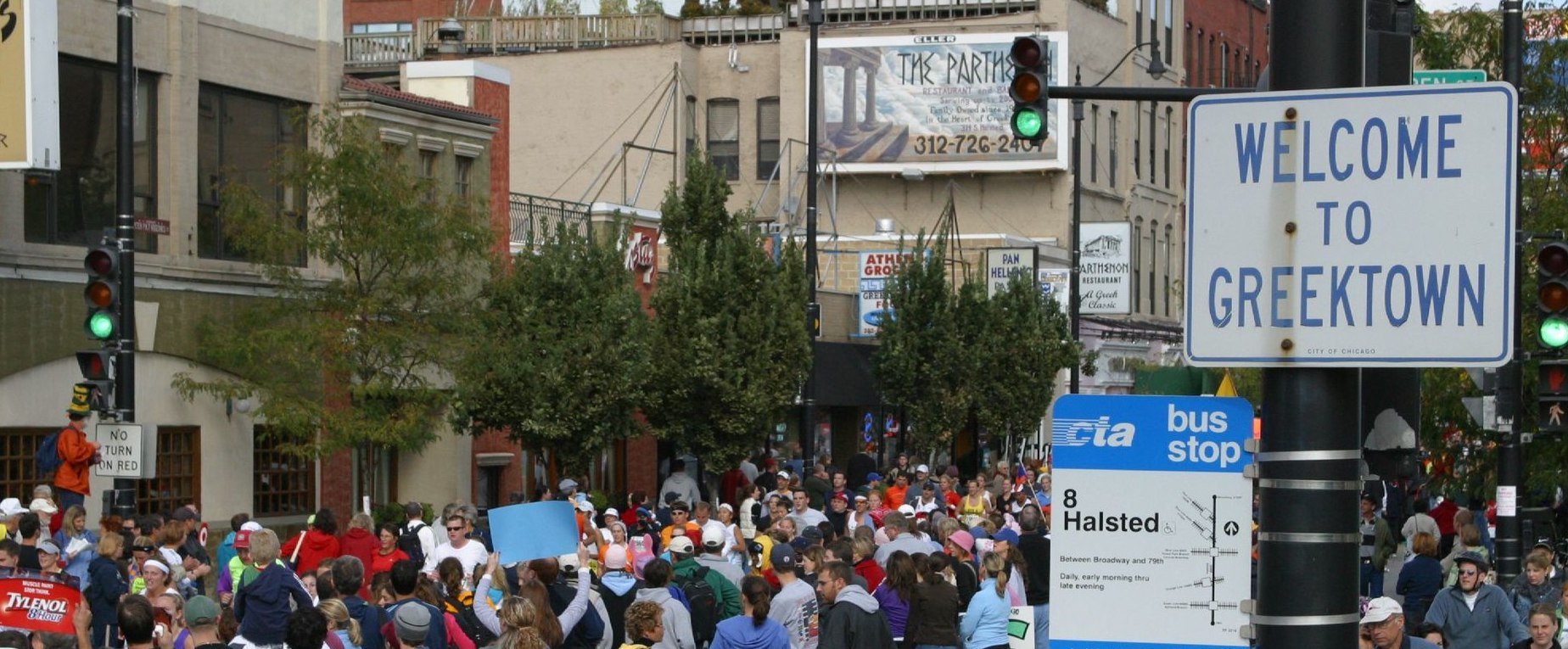
As with many cities throughout North America, the creation of Greektown in Chicago came about after Greek ship captains arrived in the city in the 1840s from New Orleans by way of the Mississippi River.
They came to America with dreams of prosperity, but they were not afraid to work the hardest jobs. Many began as food peddlers, and with determination and good work ethic, eventually became restaurant owners.
In fact, before World War II, Chicago boasted the largest Greek settlement in the USA. This is how Chicago’s Greektown earned its iconic status in the diverse, multicultural city.
The history of Greektown in Chicago
Many people do not know that Chicago’s first Greektown originally was known as “Deltaîbut”, but as Greeks began purchasing restaurants, they moved away from the areas of Fulton and South Water Street Markets and settled around the Harrison, Blue Island and Halsted areas.
This neighborhood soon became referred to as “Greektown,” and was eventually renamed as such officially.
The geography of Greektown has changed dramatically over the years, since it once was sprawling and much larger than the few city blocks it encompasses today.
In the 1960s the construction of the Eisenhower Expressway and the University of Illinois at Chicago bisected the ethnic town, and forced it to move a few blocks north.
The community dispersed to other existing Greek settlements such as Ravenswood, Woodlawn and South Shore. Today, the small strip on Halsted is typically hailed as the heart of Greektown, as the Sears Tower (now the Willis Tower) looms over the town in the distance.
During the late ’60s, Chicago’s Greektown was one of the first to introduce Greek food like gyros and saganaki to the restaurant scene.
A period of growth and development
From the ’70s through the ’90s, business was booming so much that the majority of the restaurants and business that are currently open in Greektown date back to that time.
Annual festivals such as the Taste of Greece Summer fest also became a tradition during that period of growth in the neighborhood.
Greektown received a facelift of sorts during the mid-1990’s, when the Democratic National Convention came to town. Acknowledging Greektown’s important role in shaping the diversity of the city, Chicago allocated millions of dollars for street renovations and construction of monuments of Greek temples and pavilions at the major intersection of the town.
These contributions are still notable today and are well looked after in an ongoing effort to preserve the Greek culture of Chicago.
Today, Greektown remains vibrant. It still represents a cultural hub for the third-largest population of Greeks living in the USA. It is estimated that approximately 150,000 people of Greek ancestry live in the greater Chicago area.
This allows Greektown to continue to serve as a contemporary gathering place for current generations, where you can still hear people speaking in Greek in the shops and restaurants.
Even the Walgreens Drugstore on the corner on South Halsted has neon signs in the Greek language, and continues to light them up each and every night.
See all the latest news from Greece and the world at Greekreporter.com. Contact our newsroom to report an update or send your story, photos and videos. Follow GR on Google News and subscribe here to our daily email!



